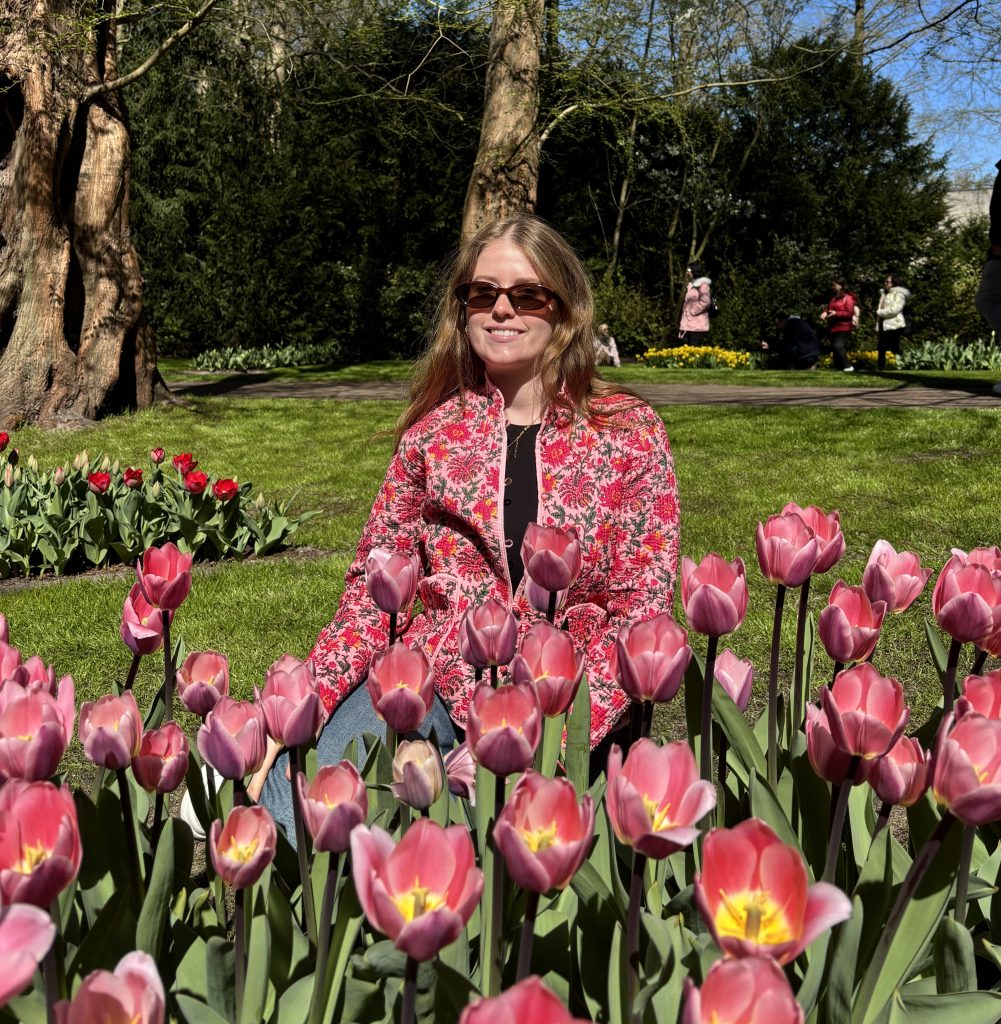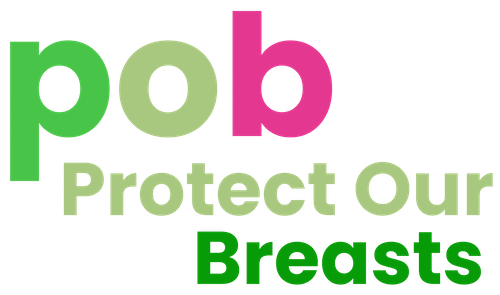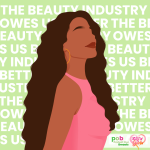WHAT I LEARNED FROM FINDING A MASS AT 19
Author: Susan Reynolds, 21, POB Policy Coordinator
University of Massachusetts Amherst (Biology and Legal Studies)

I was 19, a sophomore in college, and for a few weeks I convinced myself it would go away on its own. But, it didn’t. It grew.
Early onset cancer – diagnosed before age 50 – has been climbing globally since the 1990s. Although scientists are still piecing together the specifics of why, they suspect the cause is likely a combination of environmental and lifestyle factors that weren’t as prevalent before the 1990s.
Additionally, while some older patients have experienced similar exposure to risk factors, research suggests that bioaccumulation – the gradual buildup of persistent toxic chemicals in a living organism over time – of persistent toxic chemicals from an early age exacerbates risk for early onset cancer in younger people.
When I first noticed my mass, it felt like a hard, ball-like lump in my breast. With no family history of benign or cancerous breast tumors, being diagnosed just months later with a benign breast tumor came as a shock- especially at such a young age. It was a sobering discovery months later when I learned (from my involvement with Protect Our Breasts) that nearly 90% of breast cancers are tied not to genetics, but to environmental and lifestyle factors.
Moreover, despite the rising number of young people being diagnosed with cancer, the recommended minimum age for most routine cancer screenings hasn’t changed. The general suggested age to start screening for breast cancer is 40, and I was only 19. I can’t emphasize enough how crucial it is for younger people, including college students, to stay in tune with their bodies, keep tabs on their health, have the knowledge to identify abnormalities, recognize when something feels off, and share concerns with their healthcare providers as soon as possible.
When Your Mom Is An Expert
When I noticed my mass was growing instead of going away, I did what most college students do when something feels wrong: I called my mom.
Lucky for me – if there’s anything lucky about developing a breast tumor at 19 – I had my uniquely qualified mom on speed dial who has worked in breast cancer radiation oncology at the Dana-Farber Cancer Institute for over 30 years. She’s seen thousands of cases, and knew immediately what questions to ask, what specialist appointments I needed to make, and how to navigate the system.
“Of course I was anxious,” she told me later. “But I was also pretty confident it would be benign. In 40 years at Dana-Farber, I’ve never had a 19-year-old patient with breast cancer. Further, I was glad you were able to be seen at an academic medical center that has specialized breast pathologists who are experts in differentiating breast cancers from benign tumors. There are quite a large number of benign breast tumors which can be easily misdiagnosed as malignant”.
The Waiting Game
So my journey through the healthcare system began. My mom’s initial concerns were the large size and persistence of the mass, so my first appointment was with my primary care doctor to get a referral to a breast specialist at Brigham and Women’s Hospital. Ultrasound first. Then a biopsy – where they extract tissue with a needle and examine it under a microscope to look for any tissue abnormalities indicative of breast cancer. I waited for results that would confirm my mass was a common, harmless fibroadenoma, more common in younger people.
But my results came back inconclusive. Not cancer, but not not cancer either, meaning my mass could be something more serious. Further, with most specialized healthcare services, there are often long wait times to get appointments with specialists, especially for surgical procedures. So, as I waited for a surgical consultation and then for my surgery day to arrive, I held the uncertainty of “inconclusive” in the back of my mind.
The surgery was scheduled for July. No swimming for three weeks after. No submerging the incision in water to prevent infection. During the hottest month of the year.
Since I couldn’t eat anything prior to my afternoon surgery, when I woke up in recovery, I ate five muffins. The nurses kept offering them to me and I mean these are free muffins we were talking about. My mom laughed at me later, but at that moment, I was immensely relieved.
The Fine Print No One Mentions
In the days following, refreshing my email every hour, my mom and I anxiously awaited my surgery results. I had to wear a front-zip compression sports bra for two weeks straight after, even while sleeping. Any lifting or raising your arms above your head can stretch the breast tissue that extends under the arm pits and the sides of your upper torso can aggravate the incision, so the front-zip is recommended.
Another thing they don’t warn you about is out-of-network providers which my anesthesiologist was. Generally, healthcare providers that are “out-of-network” are those that do not participate in your health insurance network, and thus are not contracted to accept the negotiated rates you pay your health insurance company for. Overall, this results in patients paying more or the full amount for the service they receive. My bill was significantly higher than expected because this one crucial provider – someone I didn’t choose – wasn’t covered. This is American healthcare.
And then there were the thoughts I didn’t expect about my body that crept in during recovery:
Will my breasts look different now?
Will people notice?
Will my clothes fit the same way?
A 2024 study confirmed that what I was experiencing was normal. There are many multifaceted psychological impacts post-breast surgery on body image that profoundly impact how women see themselves, their sense of normalcy and femininity.
Benign – But Not Over
A few days after surgery, the pathology results arrived: benign phyllodes tumor. These are a rare, non-cancerous type of breast tumor that starts in the connective tissue of the breast, not the ducts or glands where most breast cancers begin. Phyllodes tumors grow quickly, stretch the skin, and feel firm and painless – exactly what mine had been.
But surgery can’t guarantee the removal of every single tumor cell. There’s always a small chance the tumor could return, or a new one could develop. So to monitor and prevent recurrence, I have yearly follow-ups.
What I Wish I’d Known
Looking back, I wish I’d known more about the prevalence of tumors and early onset cancers in younger people, the early signs of breast abnormalities as well as the importance of regular self-examinations. I wish I’d understood that nearly 90% of breast cancers are environmental and lifestyle-related, and that the choices we make, the products we use, the chemicals we’re exposed to – they matter more than we realize.
When I returned to UMass in the fall, I went looking for organizations focused on breast cancer prevention. That’s when I found Protect Our Breasts. What drew me in wasn’t just their focus on prevention, but their peer-to-peer educational approach about environmental risk factors and easy to digest information about safer product swaps. I could not have found a more supportive team, or a better platform than POB to share my experience!
But what makes my experience unique is that I had my mom. A breast cancer specialist with over three decades of experience. Someone who could answer my questions at any hour, guide me through the system, and reassure me when I spiraled.
But what about the students who don’t?
What about the people googling symptoms at 2 AM, navigating fears alone, trying to decode medical jargon without a translator? For the ones who don’t even know they should be checking or what they’re checking for, Protect Our Breasts and BCPP is filling in the gaps and providing digestible knowledge and resources.
If you’re reading this and you’ve ever felt a lump, noticed a change, or wondered if you should be worried – trust yourself. Check with your primary care doctor. Ask questions. Find support in your community, in our mission, and POB chapters local to you. You’re not overreacting. You’re not too young for this to matter.
And if you’re reading this because you want to help create a world where fewer of us have to go through this in the first place – welcome. We need you too.
Protect Our Breasts educates college students about environmental factors linked to breast cancer and provides practical guidance for reducing exposure to harmful chemicals in everyday products, advocating for related policy efforts, and driving market change.
Sources:
Agrawal, N. (2025, October 1). The Race to Figure Out Why More Young People are Getting Cancer. The New York Times. https://www.nytimes.com/2025/10/01/well/cancer-young-people.html
Bartosch, J. (2024, August 6). Why are more young people getting cancer? what to know as cases rise. UChicago Medicine. https://www.uchicagomedicine.org/forefront/cancer-articles/why-are-more-young-people-getting-cancer
Cernikova, K. A., Kracmarova, L. K., Pesoutova, M., & Tavel, P. (2024a, September 16). We will be different forever: A qualitative study of changes of body image in women with breast cancer – BMC public health. BioMed Central. https://bmcpublichealth.biomedcentral.com/articles/10.1186/s12889-024-20017-7#Sec30
Phyllodes tumors of the breast. American Cancer Society. (2022, June 15). https://www.cancer.org/cancer/types/breast-cancer/non-cancerous-breast-conditions/phyllodes-tumors-of-the-breast.html Schwaller, F. (2025, September 18). Why Are so Many Young People Getting Cancer?. Science News. https://www.sciencenews.org/article/why-young-people-getting-cancer

 Previous Post
Previous Post